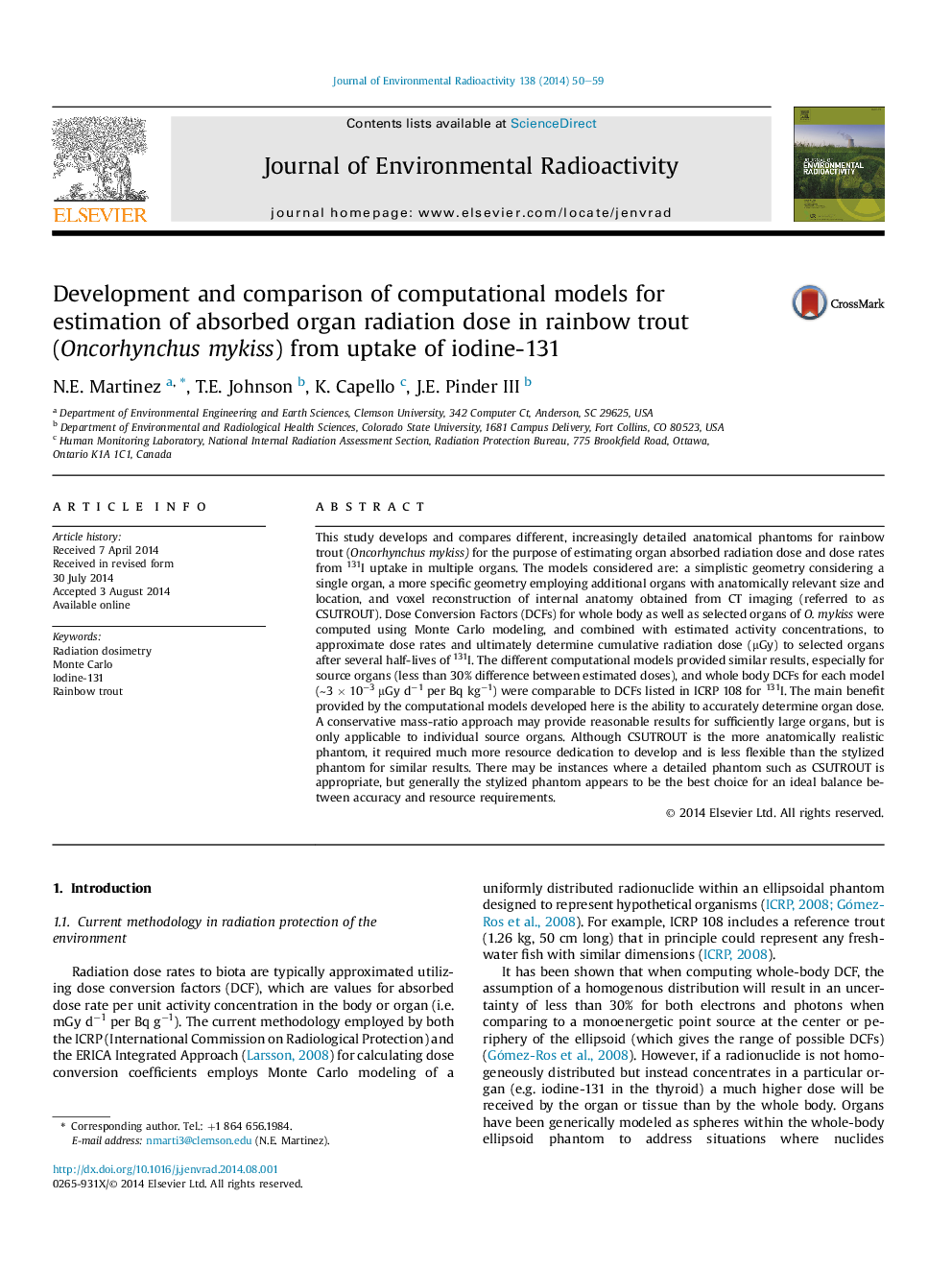| Article ID | Journal | Published Year | Pages | File Type |
|---|---|---|---|---|
| 8082703 | Journal of Environmental Radioactivity | 2014 | 10 Pages |
Abstract
This study develops and compares different, increasingly detailed anatomical phantoms for rainbow trout (Oncorhynchus mykiss) for the purpose of estimating organ absorbed radiation dose and dose rates from 131I uptake in multiple organs. The models considered are: a simplistic geometry considering a single organ, a more specific geometry employing additional organs with anatomically relevant size and location, and voxel reconstruction of internal anatomy obtained from CT imaging (referred to as CSUTROUT). Dose Conversion Factors (DCFs) for whole body as well as selected organs of O. mykiss were computed using Monte Carlo modeling, and combined with estimated activity concentrations, to approximate dose rates and ultimately determine cumulative radiation dose (μGy) to selected organs after several half-lives of 131I. The different computational models provided similar results, especially for source organs (less than 30% difference between estimated doses), and whole body DCFs for each model (â¼3 Ã 10â3 μGy dâ1 per Bq kgâ1) were comparable to DCFs listed in ICRP 108 for 131I. The main benefit provided by the computational models developed here is the ability to accurately determine organ dose. A conservative mass-ratio approach may provide reasonable results for sufficiently large organs, but is only applicable to individual source organs. Although CSUTROUT is the more anatomically realistic phantom, it required much more resource dedication to develop and is less flexible than the stylized phantom for similar results. There may be instances where a detailed phantom such as CSUTROUT is appropriate, but generally the stylized phantom appears to be the best choice for an ideal balance between accuracy and resource requirements.
Related Topics
Physical Sciences and Engineering
Energy
Nuclear Energy and Engineering
Authors
N.E. Martinez, T.E. Johnson, K. Capello, J.E. III,
